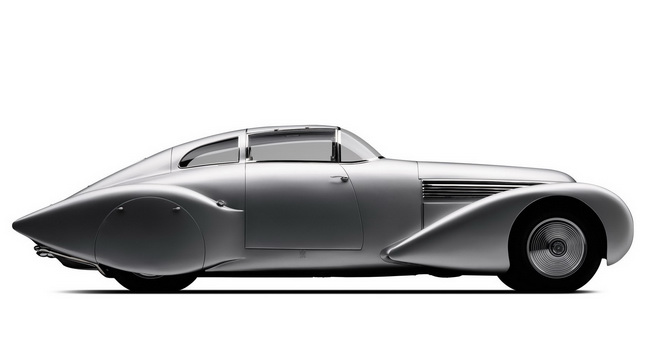If you’re familiar with classic cars, you’ll know that the interwar models of Spanish firm Hispano-Suiza are among the most coveted and collectable of them all. These weren’t just cars: these were automotive works of art.
The Hispano-Suiza H-6C of 1932 was a fairly ordinary looking two-seat convertible, but in the hands of race car driver and ex-WWI fighter pilot Andre Dubonnet, it became something all the more special.
 With the assistance of specialist coachbuilder Jacques Saoutchik and engineer Antoine-Marie Chedru, the H-6C received a four-wheel independent suspension setup and a sleek, aircraft-inspired body that featured gullwing windows and suicide doors.
With the assistance of specialist coachbuilder Jacques Saoutchik and engineer Antoine-Marie Chedru, the H-6C received a four-wheel independent suspension setup and a sleek, aircraft-inspired body that featured gullwing windows and suicide doors.
Named “Xenia” after Dubonnet’s first wife, it made its first public appearance in 1937. No doubt, many were taken with the car’s aircraft style glasshouse, tapered rear end and teardrop shaped fender flares. And this wasn’t just some glorified show pony: the Xenia could really move. Beneath that long bonnet rested an 8.0-liter inline six good for 144 bhp (105 kW) and a theoretical top speed of 125 mph (201 km/h).
After vanishing from the public eye during WWII, the Xenia resurfaced in Paris in 1946. Purchased and partly restored by Alain Balleret, President of the French Hispano-Suiza Club, the car ended up in the hands of Seattle collector Charles Morse after Balleret’s death. After being fully restored by Morse, the Xenia made a welcome return to the show circuit at the Pebble Beach Concours d’ Elegance in 2000.
Dubonnet’s revolutionary and beautiful Xenia is now on permanent display at the Mullin Automotive Museum in Oxnard, California and, as usual, we have a full gallery for your enjoyment. Also, feel free to leave a piece in the comments section below.
By Tristan Hankins
Link: The Mullin Automotive Museum
*Photos published with permission
PHOTO GALLERY











